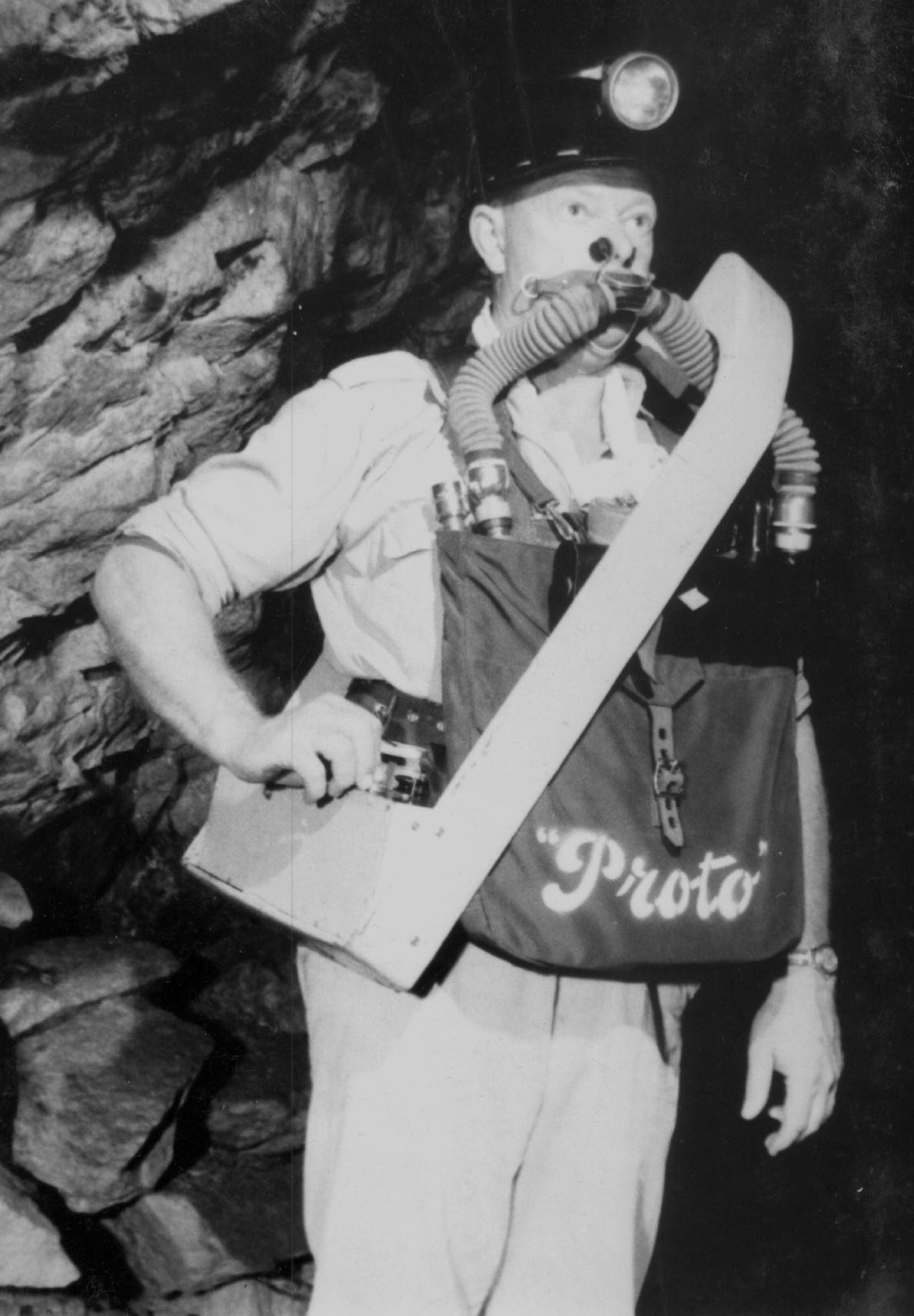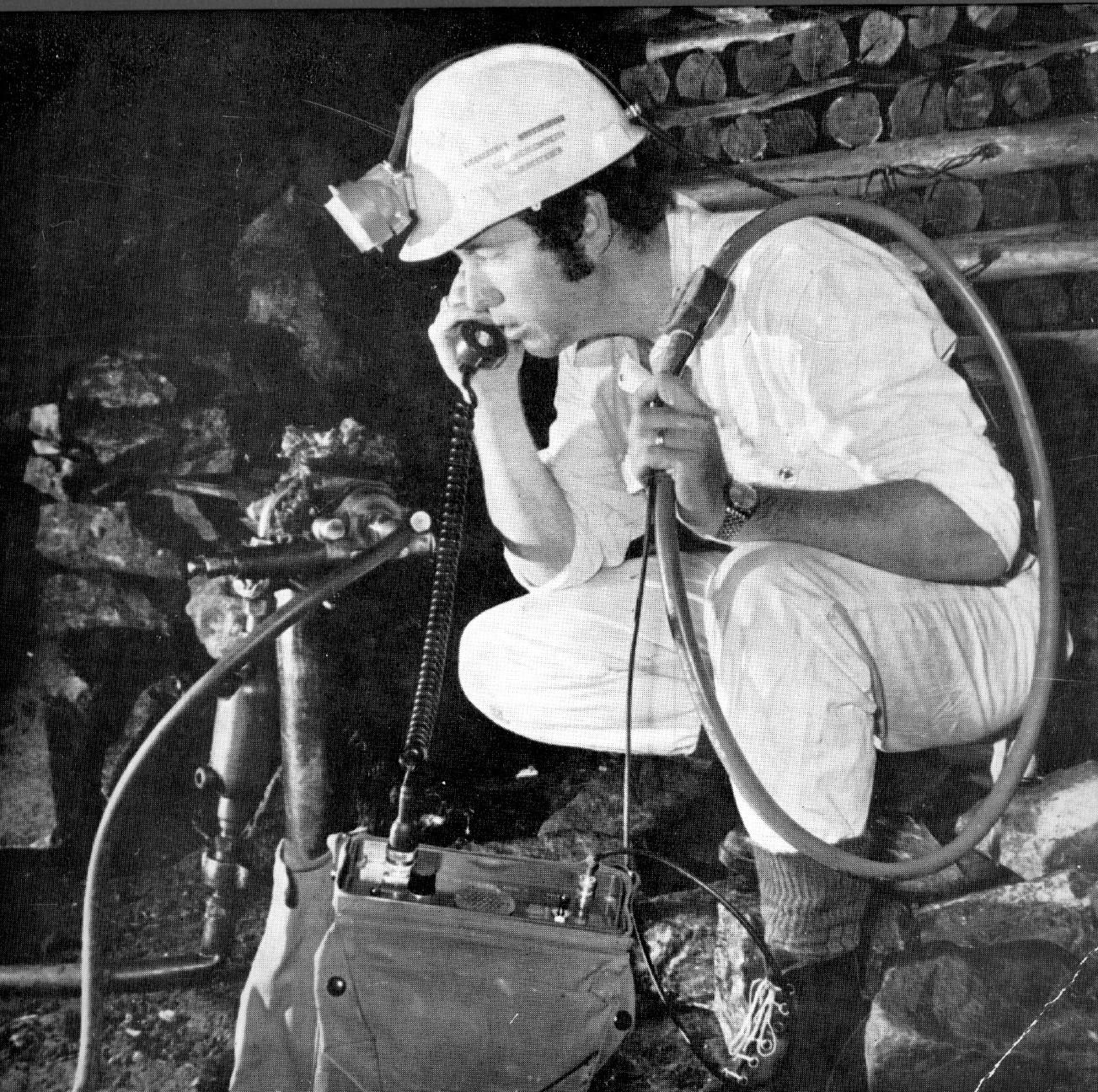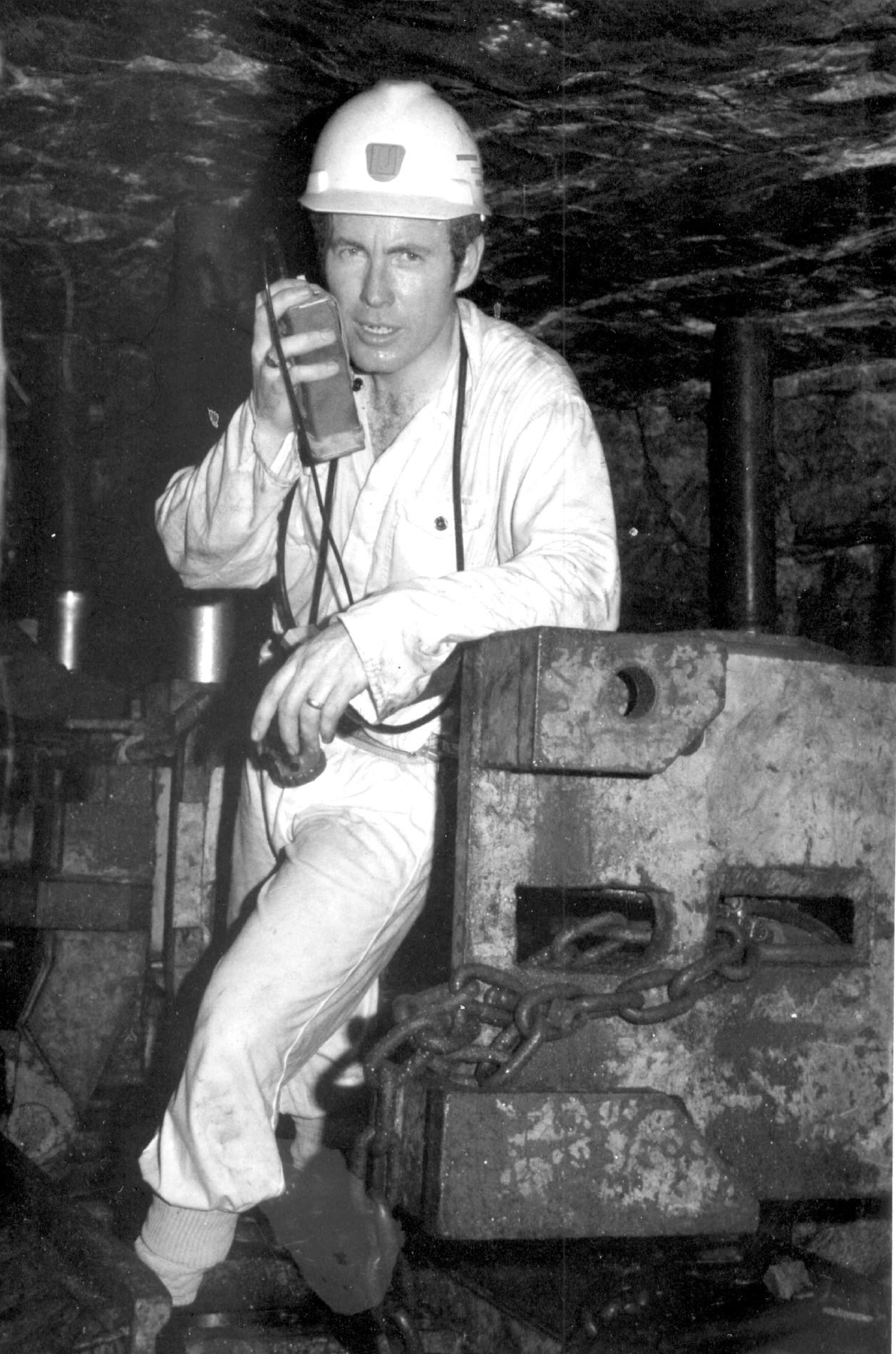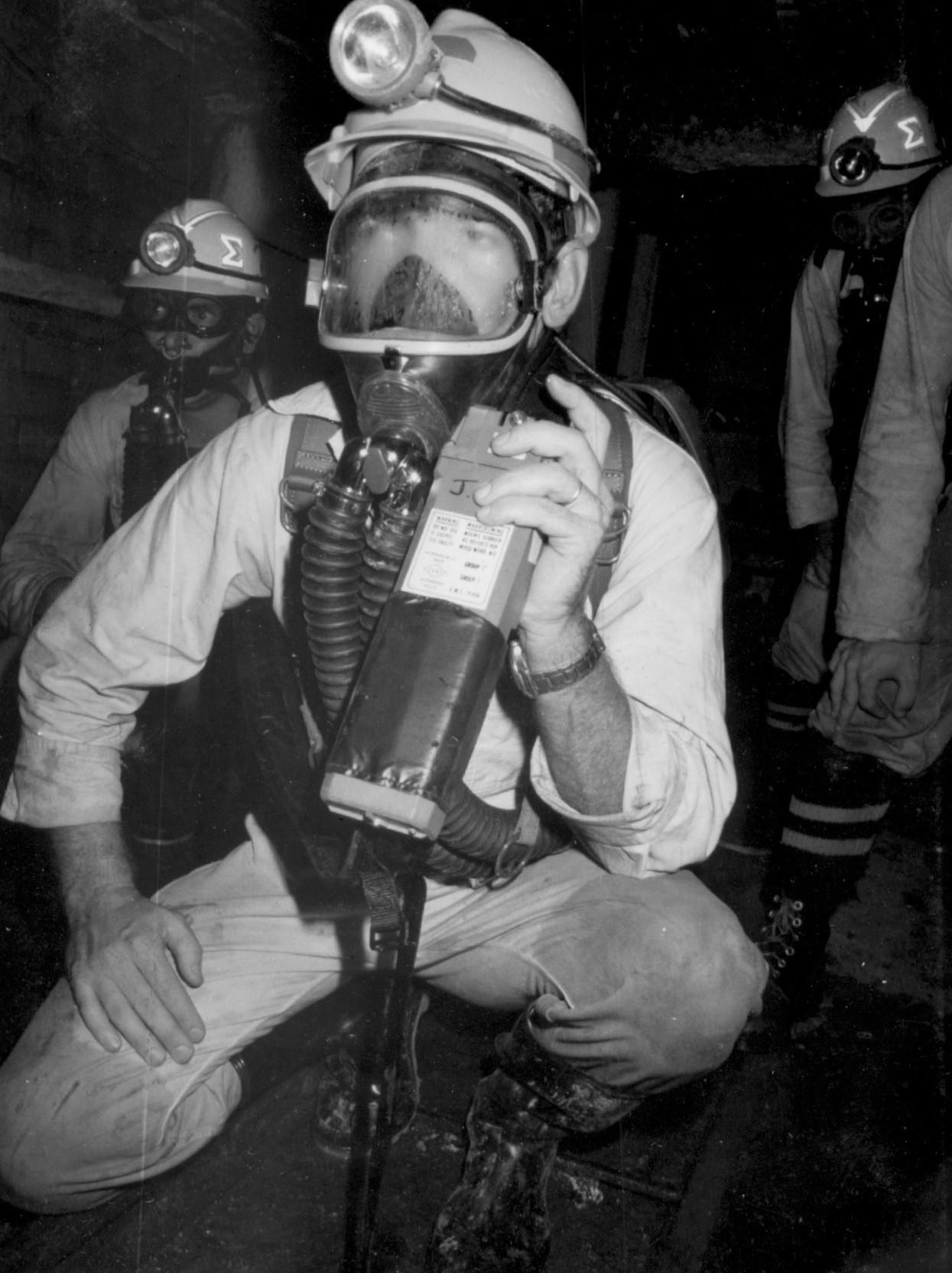
Disclaimer: Any views expressed by individuals and organisations are their own and do not in any way represent the views of The Heritage Portal. If you find any mistakes or historical inaccuracies, please contact the editor.
A problem peculiar to mining is how to transmit radio signals through rock. Anyone who has ever ventured into the lowest levels of an underground multi-storey carpark knows that your favourite radio station you were listening to just a few minutes before has suddenly disappeared. Those radio signals were not just blocked by the reinforced concrete of the building but they were absorbed by it too. This, then, is the problem confronting anyone underground in a mine who might want to communicate by radio. The range is pitiful. In fact, communications are often possible by shouting when nothing is heard on the fancy (and expensive) walkie-talkie you took down with you to talk to a colleague, using a similar radio, just a few metres away.
Whereas miners have managed without radio ever since the first brave individual ventured into the bowels of the earth, there are situations when being able to communicate directly through the rock could well prove to be a life-saver. One good example is when there’s been a rock-fall or a fire deep underground and a rescue team is despatched to take immediate action. Those rescue brigades, as they’re known, were originally called Proto teams because of the Proto breathing apparatus they all wore on their chests. In 1938, Dr A.J. Orenstein, medical adviser to Rand Mines realised how vitally important good communications were between the Proto team members and he asked Professor Basil Schonland, Director of the Bernard Price Institute (BPI) of Geophysical Research at Wits, whether radio would work underground.
Before any research could commence to answer the question the Second World War broke out and the BPI became fully involved in developing South Africa’s own radar system. One of the young electrical engineers involved in that task was Trevor Wadley, a recent graduate from Natal University. If any man could be dubbed a genius, Wadley certainly deserved the title. His fame would be made after the war when he designed and developed two remarkable pieces of electronic equipment that completely revolutionised their fields. One became known as the Wadley receiver and the other was the Tellurometer. The receiver became the mainstay of all the Royal Navy’s radio communication for three decades while the Tellurometer, a distance-measuring instrument of unparalleled accuracy, set new horizons in the world of land surveying. But Wadley’s first assignment at the newly-formed Telecommunications Research Laboratory of the infant CSIR was to look into the feasibility of transmitting a radio signal over a useful distance through the incredibly hard quartzite rock found in deep gold mines.
Wadley did the sums and then built experimental apparatus which he took underground. Its performance proved that his theoretical analysis was correct: it was possible to transmit, directly through rock, over a distance of a few hundred metres using relatively low-powered equipment. The key to success was to use a much lower frequency than that of any portable transmitter such as those used by the army at the time. In fact, Wadley’s calculations showed that the well-known “medium-wave band” familiar to everybody who listened to the SABC, and particularly to Springbok Radio, provided the longest range through rock when using the least amount of power. This latter aspect was important because equipment suitable for use underground had to be portable. It should be made clear that the period we’re talking about – the late 1940s – was characterised by radio sets that resembled fairly large pieces of furniture embellished in carved wood with a multitude of knobs around a glowing dial. It wasn’t the only thing that glowed. Inside the cabinet were a number of thermionic valves (or tubes to the Americans) that glowed a dull orange when they were operating. And those valves were the heart of all radio equipment in those days. The transistors of today only made their debut in 1948 while the ubiquitous “chips” with everything had to wait another thirty years before they appeared. So, the size and weight of the radio equipment of those days were the real problems.
The fphotograph below shows the portable set designed by the Chamber of Mines Research Laboratories in the late 1950s based on Wadley’s specifications. The Protoman is wearing a nose clip and is breathing through a schnorkel tube so he was unable to speak and, therefore, could only transmit coded signals similar to the Morse Code. At the “fresh-air base”, some safe distance back from the raging fire underground, a larger more powerful radio was used and, being in the fresh air no breathing apparatus was needed. Carefully-phrased voice signals were transmitted to the Prototeam to which simple yes/no replies were expected by an agreed code using the Morse key on the portable transmitter. All radio equipment requires an aerial or antenna and the portable set had its loop antenna encased in the carrying harness around the brigademan’s torso. A much larger circular loop was used at the fresh-air base (see main image).
Portable set designed by Chamber of Mines Research Laboratories
Though it worked well over a range of about 300 metres, and sometimes more, the apparatus was simply too big and bulky and so the project foundered until transistors became abundant.
In the mid-1960s a solid-state transceiver – a combined transmitter-receiver – was designed using all the most modern techniques (see image below). It performed exceptionally well. Its antenna was a loop in the shape of an ellipse, for carrying convenience in the confined spaces typical of many mines.
Manpack set of the mid-1960s
The performance of this set was such that it even attracted the interest of the Americans who purchased a half-dozen sets for trials in their mines. Numerous demonstrations of the equipment were undertaken in the South African mines in the belief that there might be other applications than rescue and fire-fighting but miners being conservative, hard-bitten individuals were not convinced they needed radios! However, the Prototeams certainly did but, yet again, even though the military-style manpacks were much smaller than the earlier hardware they were still considered too bulky. The need therefore arose for a handheld transceiver and a prototype appeared in 1977. It too was based on Wadley’s predictions about the optimum frequency to use.
The remarkable reduction is size was due to a novel electronic technique that was used to generate both the transmit and receive signals at exactly the right frequency. Again, the antenna was a loop of wire wrapped around the miner’s torso.
Handheld transceiver with bodyloop antenna
This equipment was given to a small electronics company in Johannesburg to manufacture and many hundreds subsequently went into service at Doornforntein Gold Mine where they were used over many years to improve the efficiency of an experiment in cutting rock rather than breaking it by means of dynamite. This was major research undertaking by the Chamber of Mines Research Organization (COMRO). Based on the excellent performance and convenience of these small sets a concerted effort was undertaken by the COMRO Electronics Division to design a far more sophisticated handheld unit that would satisfy a variety of mining needs that were by then being identified.
By 1978 the prototype was complete and came through all its underground tests with flying colours. A contract was then awarded to a Pretoria-based manufacturer of military radio equipment to turn the COMRO prototype into an extremely rugged handheld unit that would be “miner-proof”! The equipment in use by a Rescue Brigadesman wearing modern breathing apparatus with its full facemask is shown below. They eventually had the equipment they so sorely needed.
The commercial multi-purpose handheld transceiver
This was now the start of the commercial era where radio underground in mines became a business venture instead of a research and development exercise. A company came into being in Pretoria that handled the underground demonstrations and the marketing of the equipment not only in South Africa but in many other parts of the world. The brilliance of Trevor Wadley who pioneered it all had, once again, been recognised.
Main image: Fresh-air base set and large loop antenna
About the author: Dr Brian Austin is a retired academic from the University of Liverpool. Born and educated in South Africa, where he studied Electrical Engineering at Wits, he spent a decade in industry, mainly at the Chamber of Mines Research Organisation where he led the team that developed the world’s first “direct-through-rock” underground radio system. He then joined his alma mater as an academic before emigrating with his family to England where he joined the Department of Electrical Engineering and Electronics at the University of Liverpool. Now retired he has long had an interest in military history and especially the part played by radio and radar in all conflicts. In 2001 his biography of Sir Basil Schonland, called “Schonland Scientist and Soldier” was published. He served as an officer in the South African Corps of Signals (CF) for many years. He was recently awarded the Master of Signals Commendation of the Royal Corps of Signals.
Comments will load below. If for any reason none appear click here for some troubleshooting tips. If you would like to post a comment and need instructions click here.




